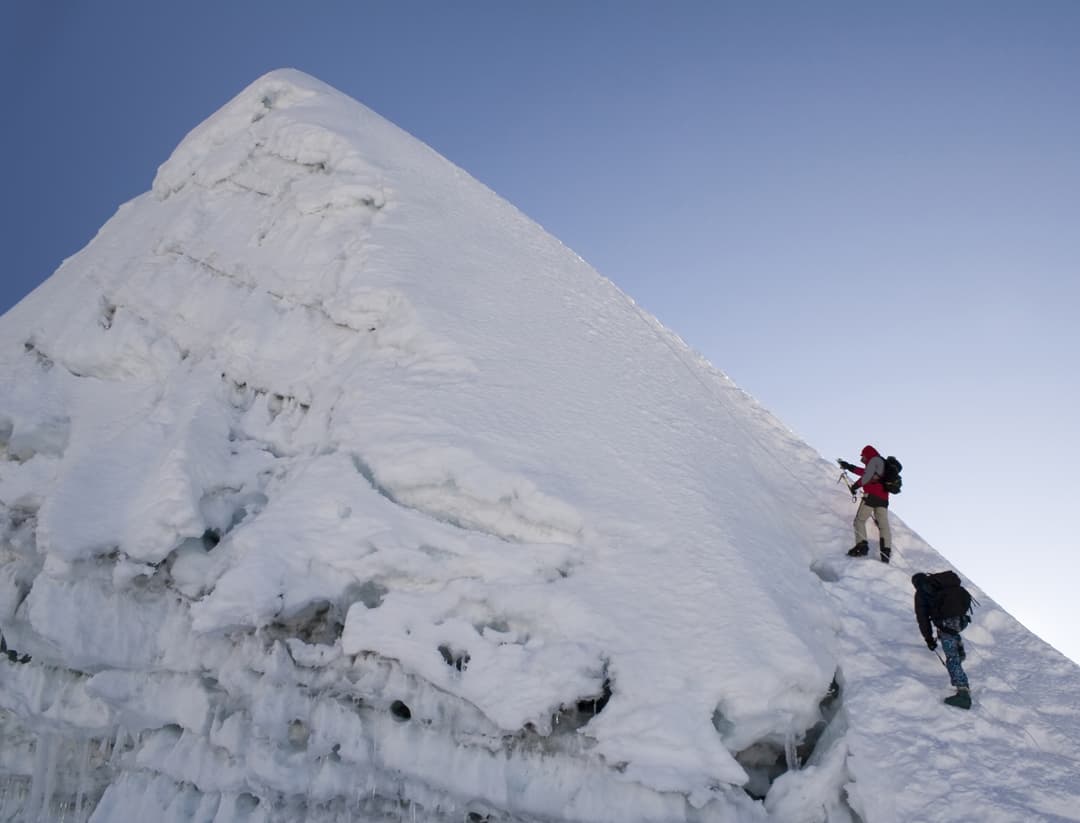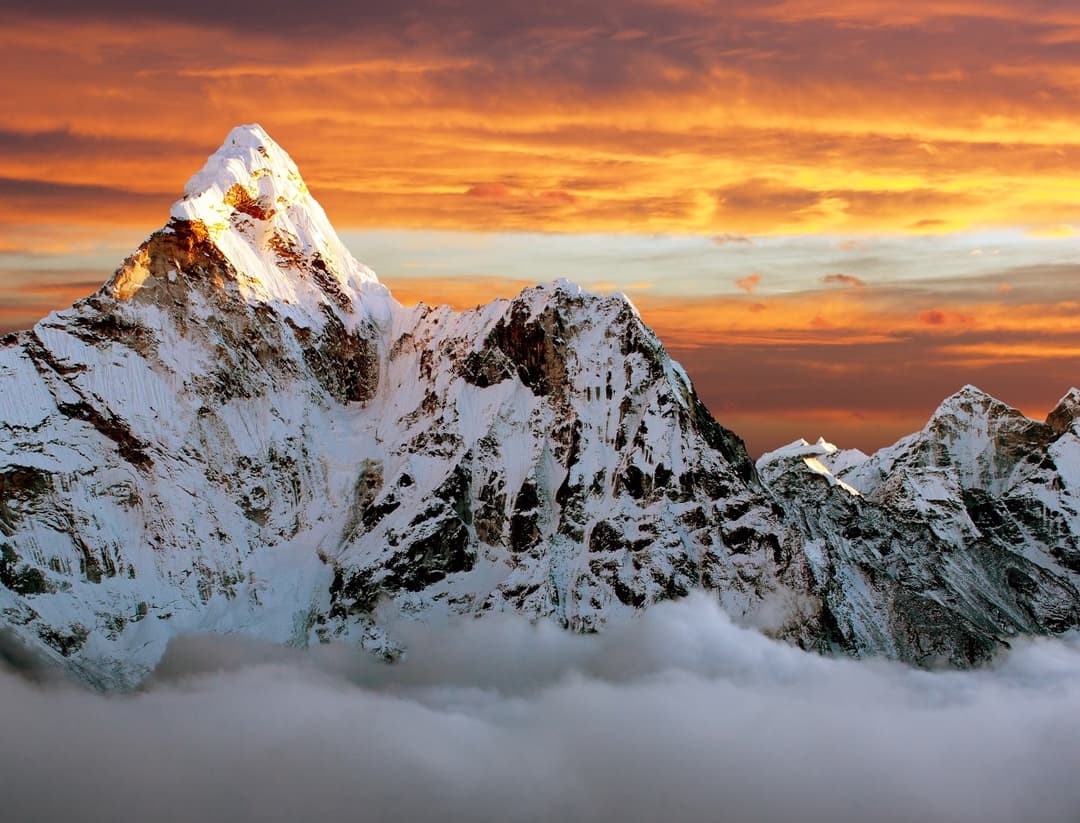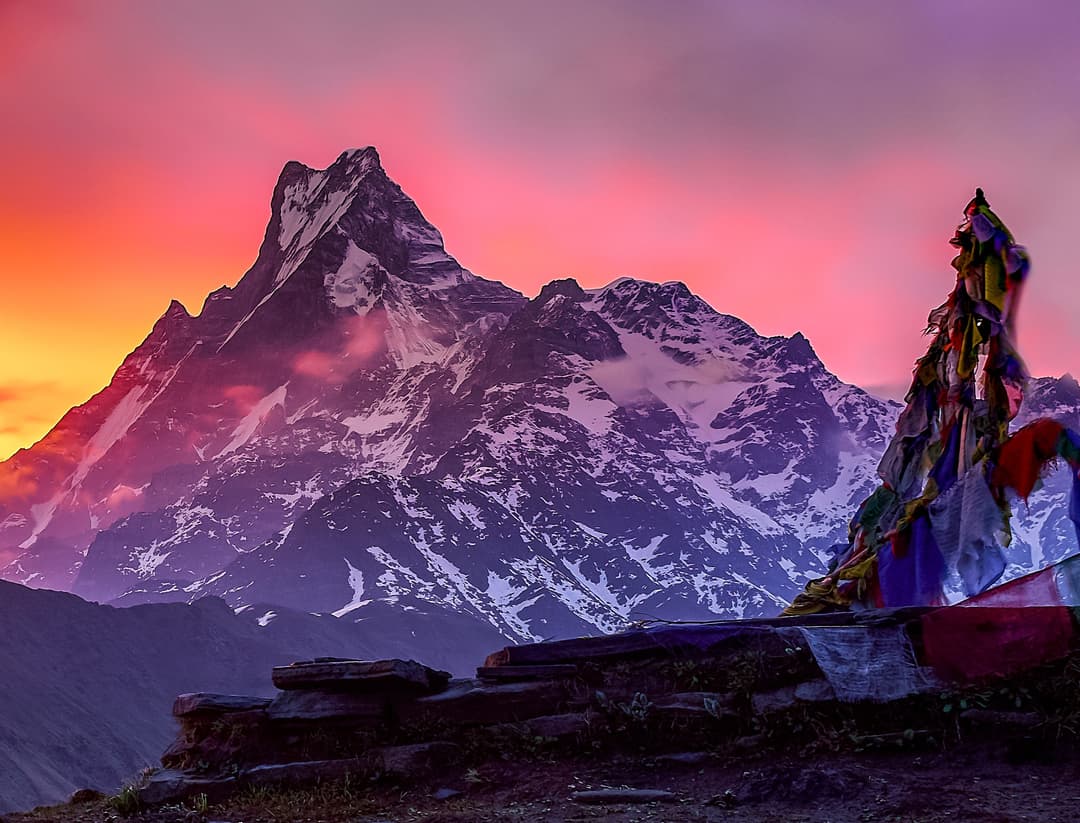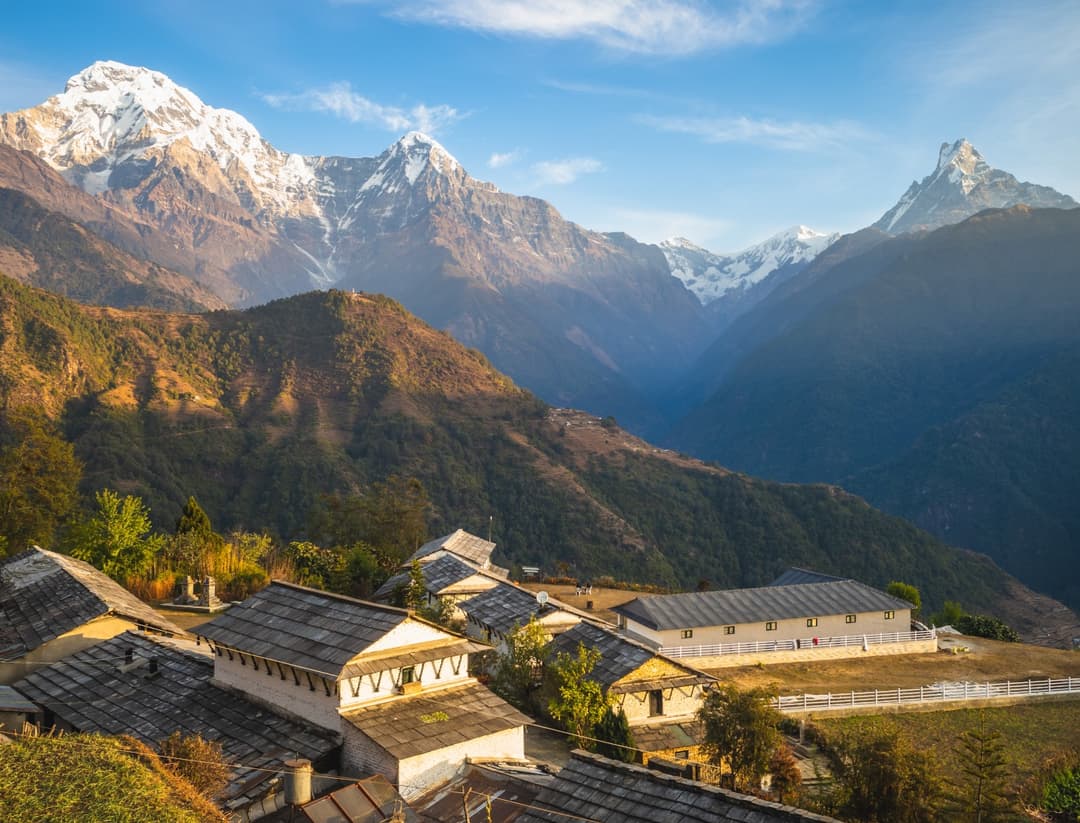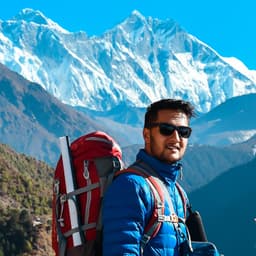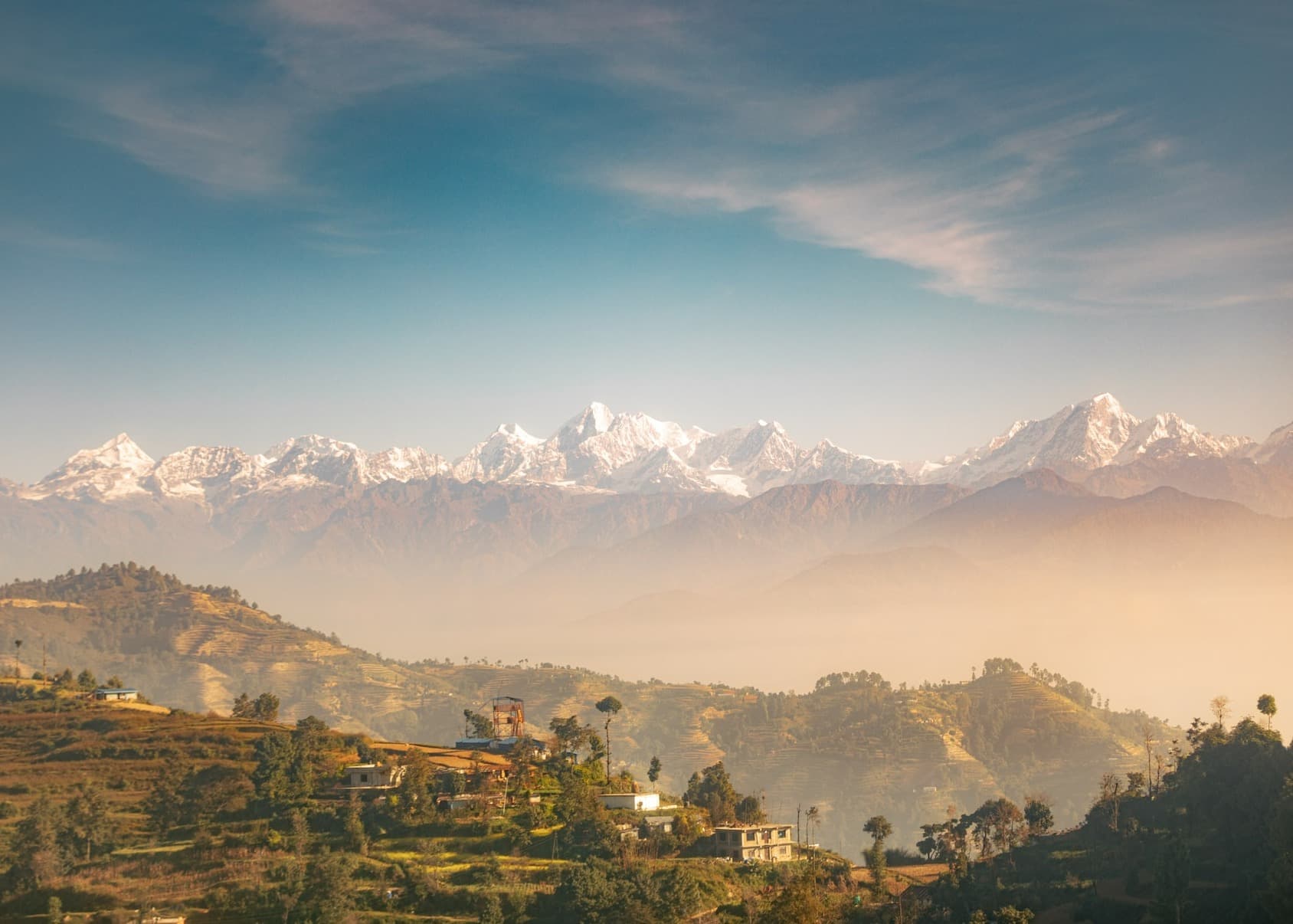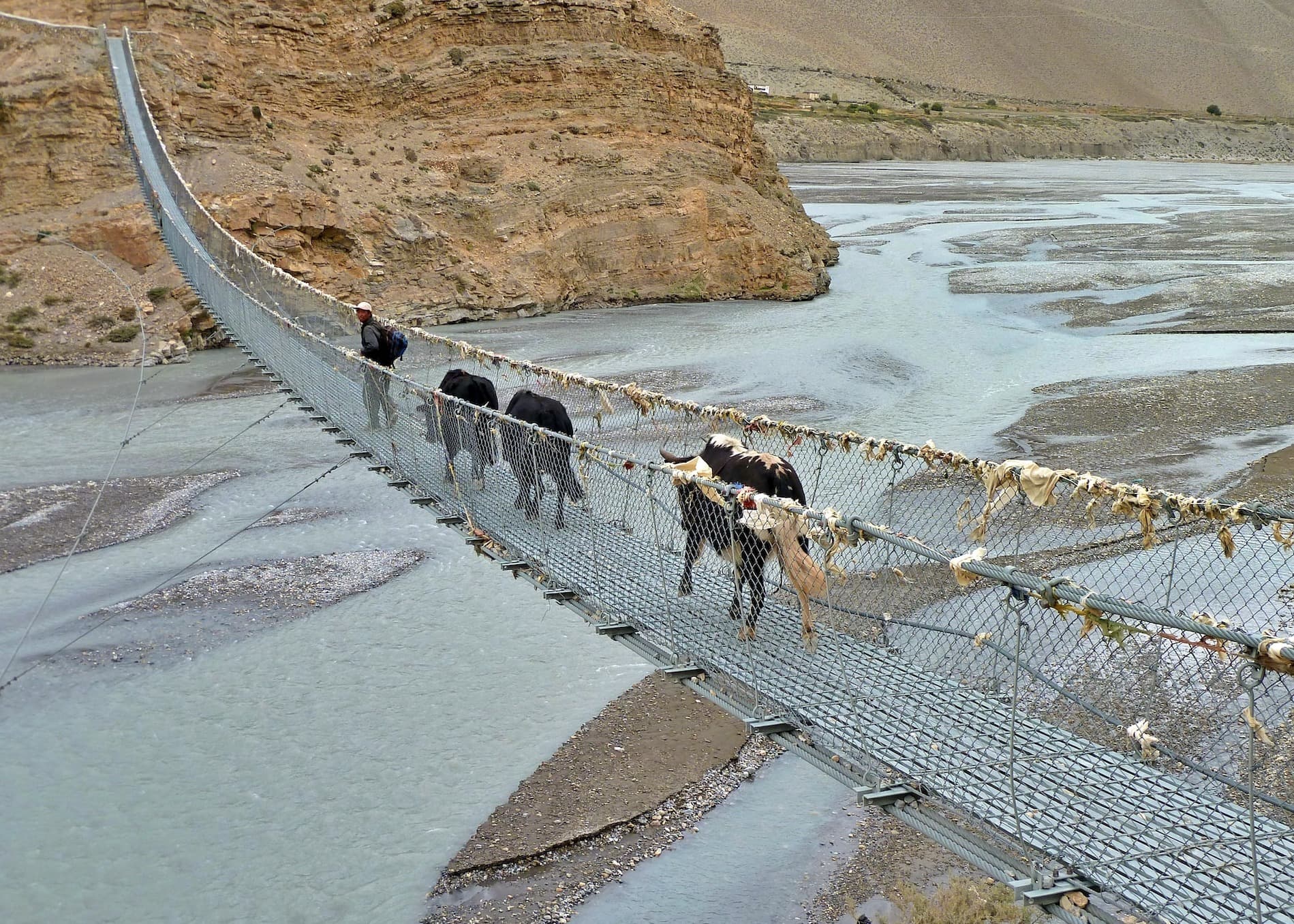When it comes to adventure and breathtaking natural beauty, Nepal stands as an epitome of a trekker's paradise. Nestled in the lap of the mighty Himalayas, this enchanting country offers a plethora of trekking opportunities throughout the year.
However, choosing the best time to trek in Nepal can significantly enhance your experience, allowing you to witness the mesmerizing landscapes in their full glory. In this comprehensive guide, we will delve into each season and explore the ideal time to embark on your memorable trekking adventure.
Spring (March to May)
Here are some reasons why spring is an ideal season for trekking in Nepal:
Vibrant Rhododendron Forests: Spring brings an explosion of colors to Nepal's hills and valleys as rhododendron forests burst into bloom. The hillsides are adorned with vibrant hues of red, pink, and white, creating a breathtaking and picturesque landscape. Trekking through these blooming forests is a feast for the eyes and a true delight for nature enthusiasts.
Mild and Pleasant Weather: Spring in Nepal is characterized by mild temperatures, making it an ideal time for trekking. The days are warm and comfortable, allowing for enjoyable hikes, while the evenings offer a cool and refreshing ambiance. The weather is generally stable, with clear skies, making it perfect for capturing stunning views of the snow-capped mountains.
Panoramic Mountain Views: Spring offers some of the best views of Nepal's iconic peaks. The skies are clear, and the mountains, including Everest, Annapurna, and Dhaulagiri, are beautifully visible against the backdrop of azure skies. The panoramic vistas of these majestic giants are truly awe-inspiring and leave an indelible mark on trekkers' memories.
Diverse Flora and Wildlife: Nepal is blessed with a rich and diverse ecosystem, and spring is a time when the flora and fauna come alive. Along the trekking trails, you'll encounter a variety of plant species, including wildflowers, orchids, and aromatic herbs. The forests reverberate with the songs of numerous bird species and the occasional sightings of wildlife, such as musk deer and Himalayan tahr.
Festivals and Cultural Immersion: Spring is a vibrant season in Nepal, marked by various cultural festivals and celebrations. During your trek, you may have the opportunity to witness and participate in festivals like Holi and Nepali New Year (Baisakh). These festivities provide a unique insight into the country's rich cultural heritage, allowing you to engage with locals and experience their warmth and hospitality.
Teahouse Trekking: Spring is an excellent time for teahouse trekking in Nepal. Teahouses, which are small lodges along the trekking routes, provide cozy accommodation and delicious meals. During spring, teahouses are more readily available and offer a comfortable and convenient resting place for trekkers to unwind and recharge after a day's hike.
Some popular trekking routes for spring in Nepal include the Everest Base Camp Trek, Annapurna Circuit Trek, and Langtang Valley Trek. These routes cater to a range of trekking experience levels, from moderate to challenging, and offer a perfect blend of natural beauty, cultural encounters, and awe-inspiring vistas.
Spring trekking in Nepal is a mesmerizing experience that showcases the country's natural wonders at their finest. From the vibrant rhododendron forests to the panoramic mountain views and cultural festivities, Nepal in spring offers an adventure that is both visually stunning and culturally enriching.
Summer Season (June to August)
Summer in Nepal falls between June and August, and it is characterized by warmer temperatures, lush greenery, and occasional rainfall. While the weather may be a bit more challenging compared to other seasons, summer trekking in Nepal has its own charm and rewards. Here are some reasons why summer trekking in Nepal is worth considering:
Serene Trails: Unlike the peak seasons, summer sees fewer trekkers on the trails, allowing you to enjoy a sense of tranquility and solitude. You can immerse yourself in the peaceful surroundings, connect with nature, and experience a more intimate connection with the mountains.
Breathtaking Landscapes: Summer in Nepal brings vibrant colors to the landscapes. The hills and valleys are covered in lush greenery, and the alpine meadows are in full bloom. The clear skies offer stunning panoramic views of snow-capped peaks, including the majestic Everest and Annapurna ranges.
Unique Wildlife: Nepal's national parks and conservation areas are home to a rich array of wildlife. During summer, you have a higher chance of spotting rare species like the red panda, musk deer, and various bird species. The forests come alive with the melodies of chirping birds and the occasional sighting of playful monkeys.
Cultural Experiences: Trekking in Nepal provides an opportunity to immerse yourself in the local culture. The summer months coincide with festivals like Teej and Janai Purnima, which offer a glimpse into Nepalese traditions and customs. You can witness colorful processions, dance performances, and engage with the friendly locals along the way.
Lower Costs and Availability: Since summer is considered the off-season for trekking in Nepal, you can benefit from lower costs for accommodations, permits, and guide services. Additionally, you will have greater availability and flexibility in choosing your preferred trekking routes and teahouses.
However, trekking in Nepal during summer also comes with its challenges. The weather can be unpredictable, with occasional rainfall and the possibility of leeches in certain areas. It is crucial to be prepared with proper gear, including rainproof clothing, sturdy footwear, and insect repellent.
Some popular trekking routes for summer in Nepal include the Langtang Valley Trek, Upper Mustang Trek, and Rara Lake Trek. These routes offer a blend of natural beauty, cultural exploration, and moderate difficulty levels suitable for both seasoned trekkers and beginners.
Autumn (September to November)
Autumn is widely regarded as the best time for trekking in Nepal, and for good reason. With its moderate temperatures, clear skies, and breathtaking vistas, autumn offers an ideal combination of favorable weather conditions and natural beauty. Trekking in Nepal during this season is a dream come true for adventure seekers and nature enthusiasts. Here are some reasons why autumn is the perfect time to explore Nepal's trekking trails:
Mild and Pleasant Weather: Autumn in Nepal is characterized by mild temperatures during the day and cooler nights, creating a comfortable and enjoyable trekking environment. The scorching heat of summer has subsided, making hiking a pleasant experience. The skies are generally clear, providing stunning views of the mountains and surrounding landscapes.
Spectacular Mountain Views: Autumn offers some of the most awe-inspiring mountain vistas in Nepal. The crystal-clear skies provide unobstructed views of the snow-capped peaks, including the iconic Mount Everest, Annapurna, and Langtang ranges. The golden hues of autumn sunlight cast a magical glow on the mountains, creating a breathtaking and memorable experience for trekkers.
Vibrant Autumn Foliage: Nepal's hills and valleys come alive with a riot of colors during autumn. The lush green forests transition into a vivid tapestry of red, yellow, and orange as the leaves change. The landscapes are transformed into a breathtaking canvas of natural beauty, providing trekkers with a stunning backdrop for their journeys.
Festivals and Cultural Experiences: Autumn is a festive season in Nepal, with major celebrations like Dashain and Tihar taking place. These festivals offer a unique opportunity to witness and participate in traditional rituals, music, dance, and vibrant street celebrations. Immerse yourself in the rich cultural heritage of Nepal and experience the warmth and hospitality of the locals.
Teahouse Trekking: Autumn is the peak season for trekking in Nepal, and teahouses along the trekking routes are fully operational, providing comfortable accommodation and delicious meals. The teahouses offer a chance to connect with fellow trekkers from around the world, share stories, and forge lasting friendships.
Diverse Trekking Options: Nepal offers a plethora of trekking options during autumn, catering to different preferences and experience levels. From popular routes like the Everest Base Camp Trek and Annapurna Circuit Trek to off-the-beaten-path trails like Upper Mustang and Manaslu Circuit, there is something for everyone. Whether you seek a challenging adventure or a more leisurely hike, autumn provides ample choices.
Trekking in Nepal during autumn is a truly magical experience. From the mild weather and stunning mountain vistas to the vibrant foliage and cultural celebrations, autumn showcases the best of what Nepal has to offer.
Winter (December to February)
Nepal, renowned for its majestic Himalayan peaks and breathtaking landscapes, offers a unique and enchanting experience for trekkers during the winter months. While winter trekking in Nepal requires more preparation and is considered the off-season, it rewards adventurers with pristine snowy vistas, uncrowded trails, and a sense of tranquility that is hard to find during peak seasons. Here are some reasons why winter trekking in Nepal is worth considering:
Serenity and Solitude: Winter brings a quieter and more serene atmosphere to the trekking trails. With fewer tourists compared to the bustling peak seasons, you can enjoy the beauty of Nepal's landscapes in solitude. The tranquility of the snowy landscapes and the peacefulness of the mountains provide a unique and meditative experience.
Clear Skies and Panoramic Views: Winter in Nepal offers clear skies and excellent visibility, allowing trekkers to enjoy stunning panoramic views of snow-capped peaks against a backdrop of clear blue skies. The crisp winter air creates an atmosphere of absolute serenity, and you can witness breathtaking sunrises and sunsets over the snowy mountains.
Unique Winter Landscapes: Trekking in Nepal during winter allows you to witness the country's landscapes transformed into a winter wonderland. The trails, hills, and forests are covered in a pristine blanket of snow, creating a magical and ethereal ambiance. The frozen lakes, icy waterfalls, and snow-laden trees add to the enchantment of the trekking experience.
Cultural Immersion: Nepal's rich cultural heritage comes alive during the winter months, with various festivals and celebrations taking place. Trekkers during this time have the opportunity to witness and participate in unique cultural events such as Maghe Sankranti and Losar (Tibetan New Year). You can engage with the warm and welcoming locals, learn about their traditions, and experience the authentic Nepalese way of life.
Lower Crowds and Cost: Winter is the least crowded season for trekking in Nepal, which means you can enjoy the trails with fewer fellow trekkers. This solitude allows for a more personal and intimate connection with nature. Additionally, accommodation, permits, and guide services are more readily available during this season, often at reduced prices, making it a budget-friendly option.
Some popular trekking routes for winter in Nepal include the Everest Base Camp Trek, Annapurna Base Camp Trek, and Langtang Valley Trek. These routes offer a combination of breathtaking mountain vistas, cultural encounters, and moderate to challenging terrains, catering to both experienced trekkers and beginners seeking winter adventures.
In conclusion, choosing the best time to trek in Nepal depends on personal preferences, trekking goals, and the experience one seeks. Each season in Nepal has its own unique charm and advantages.



